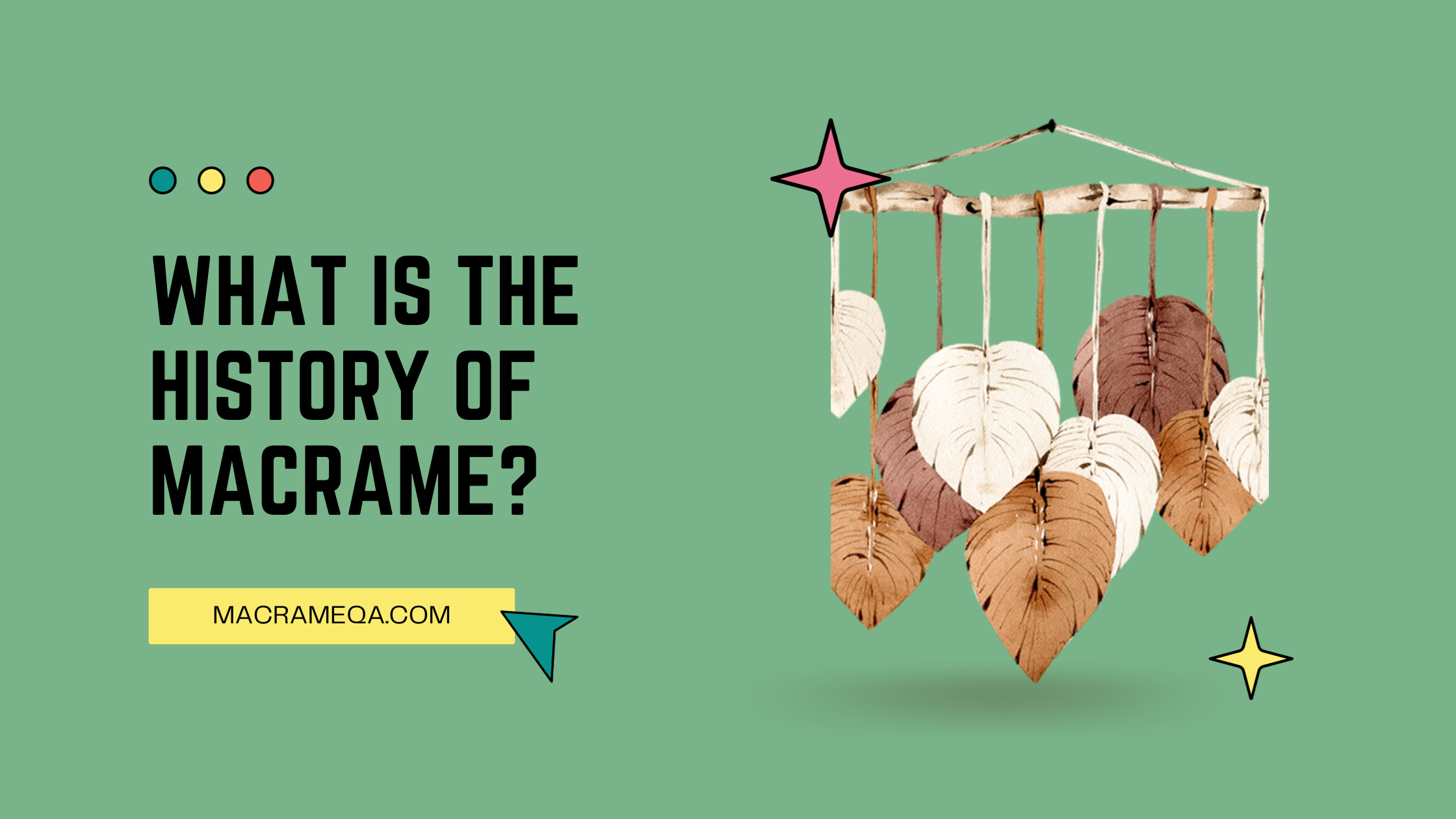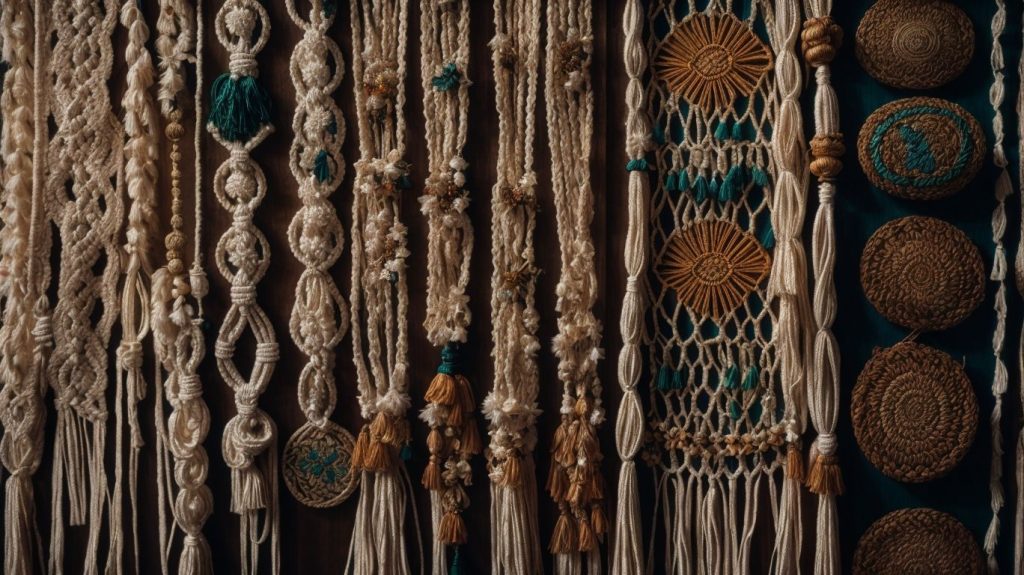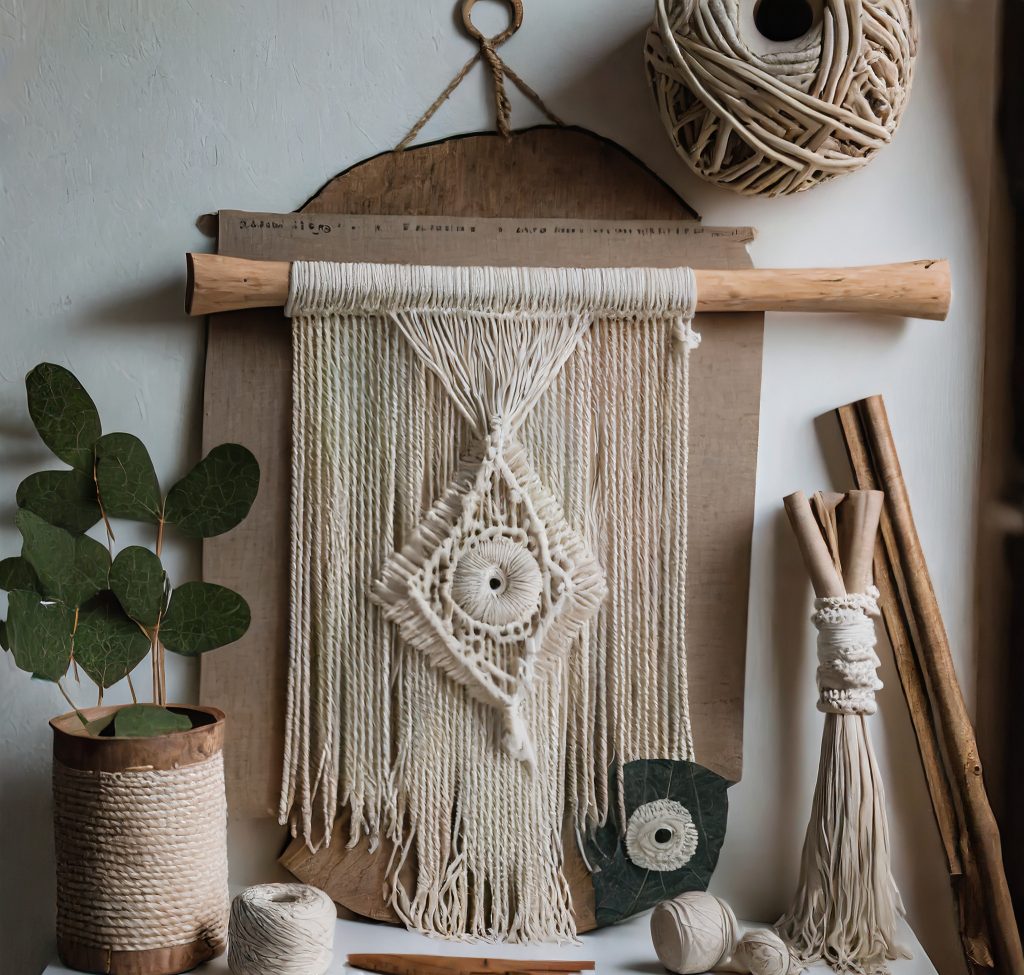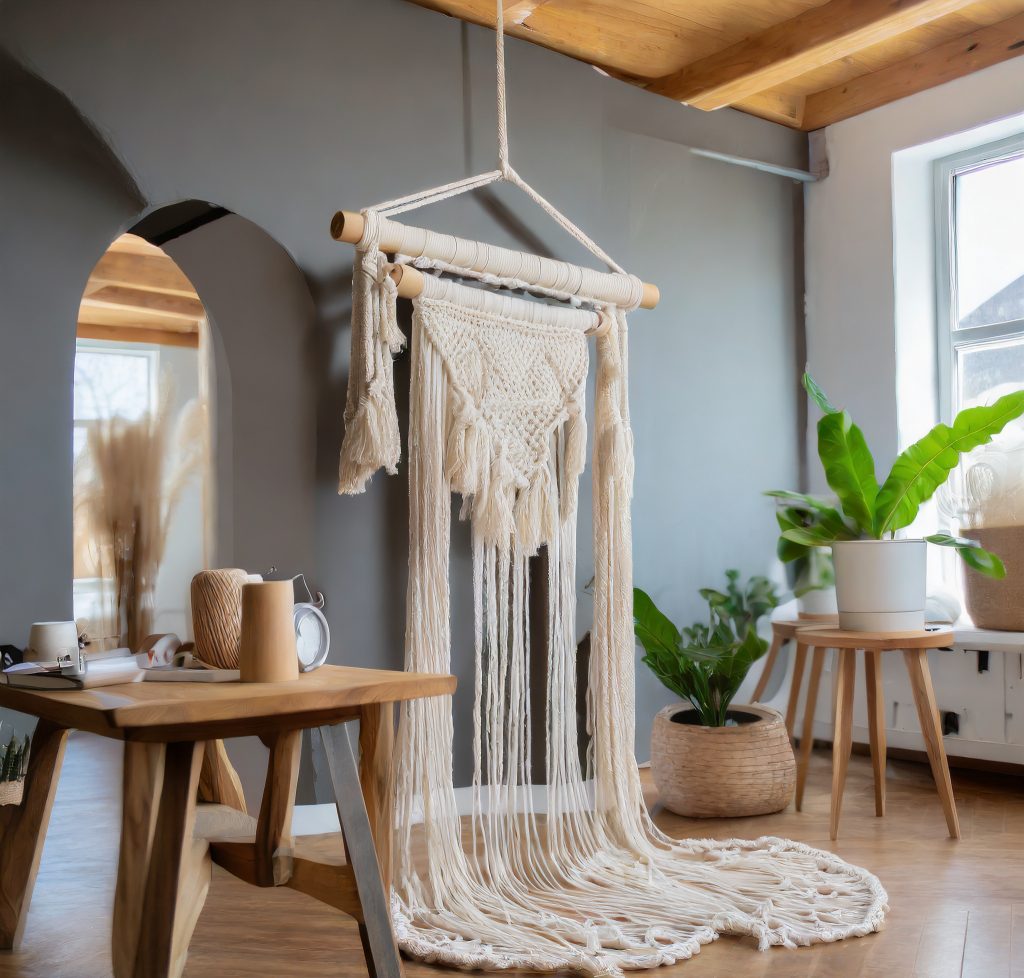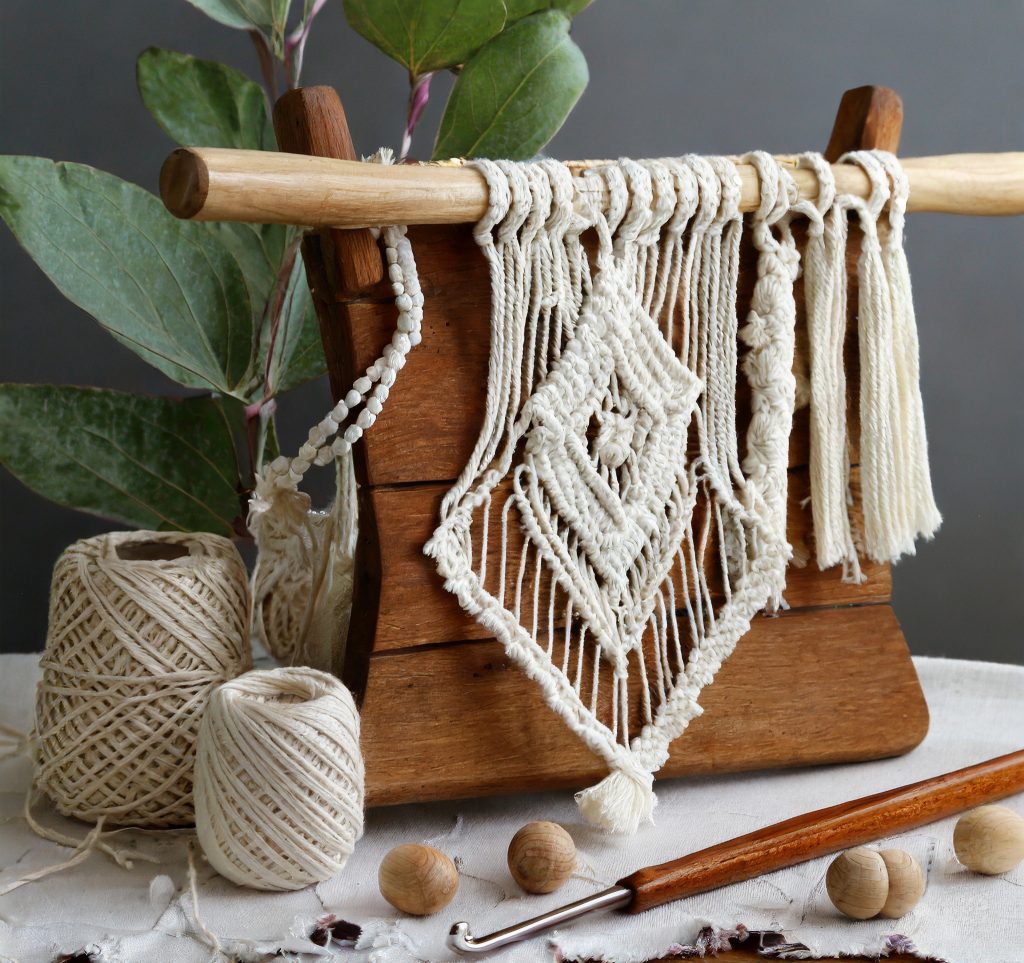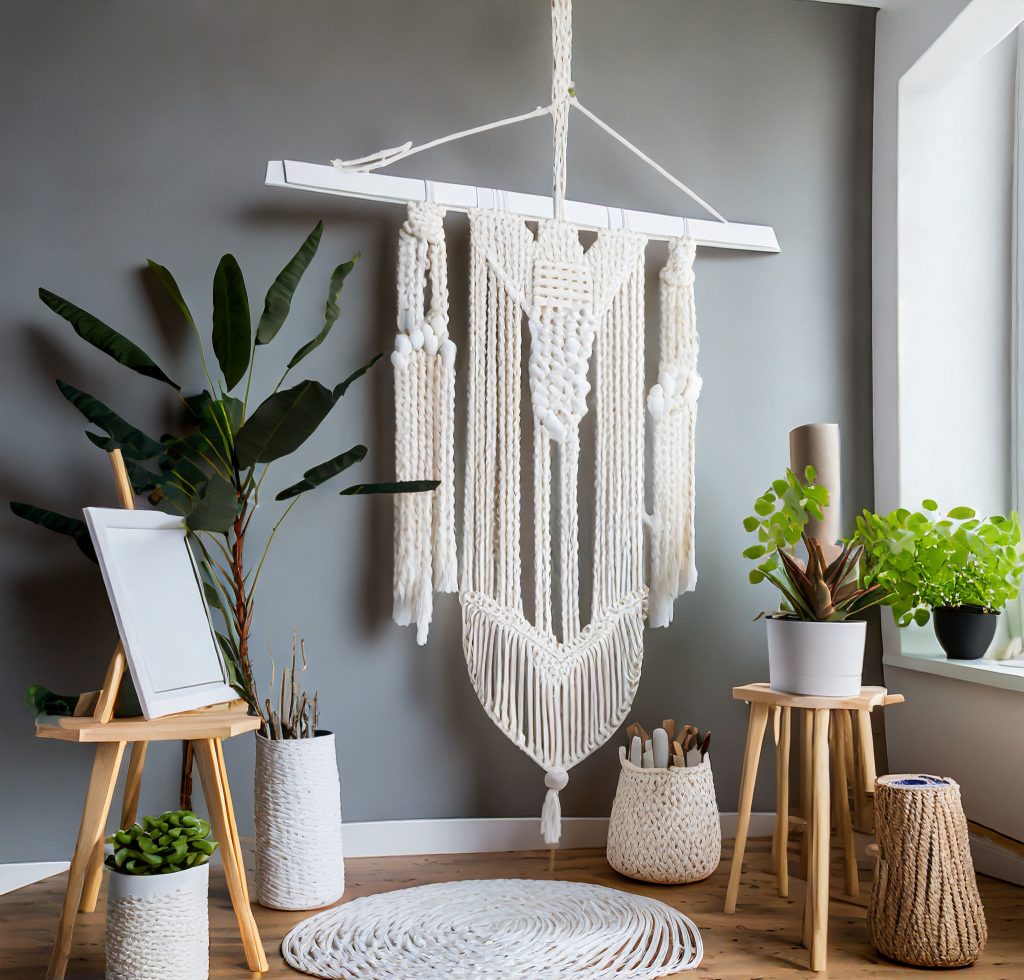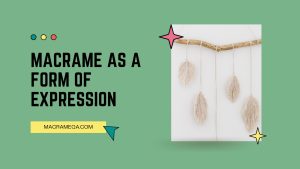Macrame – a centuries-old, alluring art form – has a prosperous and interesting past. It began in the 13th century when Arabian weavers knotted fabrics. In the 17th century, macrame became popular in Europe during the Age of Exploration. Sailors used it to pass the time on the seas. Later, it was used to decorate curtains, bedspreads, and clothing in Victorian homes.
This craft has adapted to different cultures and aesthetics. From bohemian wall hangings to fashionable jewelry, macrame has shown its versatility. Recently, modern artisans have embraced this traditional craft and given it a contemporary twist.
What makes macrame special is that it doesn’t require needles or looms. Craftspeople use just their hands and knots to create intricate designs. This manual process encourages creativity and lets the artist add their own personal touch to every piece.
The oldest extant example of macrame is an altar cloth from the 16th century, according to the Museum of Decorative Arts in Paris. This artifact proves the longevity of the craft.
As we uncover macrame’s history, we find tradition, innovation, and artistry. From its ancient origins to its current popularity, macrame continues to bewitch us with its beauty and skill. Let’s join this journey through time and explore the roots of this remarkable art form!
Origins of Macrame
Macrame has its roots in ancient civilizations. It was used for practical and decorative purposes. Here’s what we know about its origins:
- Macrame is believed to have originated in the Middle East, Arab lands. Then it spread to the Mediterranean and Asia. Sailors and traders made use of the craft to create designs and patterns.
- During the Renaissance, macrame became popular among Europeans. Nobles used the art to decorate clothing and homes.
- Spanish explorers and colonizers took macrame to the Americas. Native Americans incorporated their own cultural techniques. This created a unique style celebrated even today.
Macrame has evolved over time to fit different regions and cultures. From the delicate Arabian patterns to the bold Native American designs, each style shows the culture and history behind the craft.
An interesting story involves a shipwreck in India in the 17th century. The sailors survived due to their macrame knotting skills. They created hammocks for survival. This demonstrated the practicality of macrame and helped it spread around the world.
Macrame’s journey from its Middle Eastern roots to its current global presence is a tribute to its versatility and appeal. It is still used for functional purposes and as art. Its intricate knots and timeless beauty captivate people worldwide.
Early Uses of Macrame
Macrame, an ancient craft from Arabic weavers, was originally used to make decorative fringes on fabrics. It spread to many cultures and was adapted for practical purposes.
Early Uses of Macrame:
Culture: Arabian
Purpose: Decorative Fringes
Arabian cultures popularized macrame for adding intricate fringes to fabrics. This gave clothing and home accessories a touch of elegance. Chinese artisans also used macrame to create ornamental knots for ceremonies, symbolizing love, luck, and protection.
Mediterranean fishermen relied on macrame for making fishing nets. The durable and flexible technique allowed them to make intricate nets that could withstand harsh sea conditions. This improved fishing practices and increased catch sizes.
Pro Tip: To modernize macrame designs, try using different materials like colored cords or beaded accents. Have fun with it!
Macrame in Modern Times
Macrame has come a long way. From wall hangings to fashion accessories, it is now part of modern design and fashion. The art form appeals to a new generation of artists because of its traditional techniques mixed with innovative designs. It’s now seen in interior decor, fashion shows, and weddings.
Artists and designers use macrame to express themselves creatively. They experiment with materials like wood, metal, beads, and even recycled materials. This adds depth and uniqueness to the pieces.
You can incorporate macrame into modern interiors with large wall hangings. The texture and intricacy bring visual interest and warmth. Or use macrame plant hangers to bring greenery indoors with a bohemian touch.
Macrame accessories such as earrings, necklaces, and handbags are also popular. They offer craftsmanship and contemporary designs that suit any style – even eco-friendly fashion!
No matter the piece, macrame captivates admirers. It reflects an admiration for handmade craftsmanship in a digital age. We still seek connection with traditions that celebrate human creativity – making macrame linked to our modern times.
Techniques and Materials Used in Macrame
Macrame is an intricate craft – using different techniques and materials to make unique and beautiful designs. Fundamental knots, along with the chosen fibers, all play an important role in the process.
| Techniques |
|---|
| Square knot |
| Half hitch |
| Double half hitch |
| Spiral stitch |
| Overhand knot |
| Materials |
|---|
| Cotton cord |
| Jute twine |
| Hemp rope |
| Nylon thread |
| Macrame cord |
It’s key to understand these techniques to achieve the desired patterns. For example, the square knot is often used as a base for many designs, while double half hitch adds texture and complexity.
Natural fibers like cotton and jute have a rustic appeal and offer flexibility and sturdiness. Materials like nylon thread and macrame cord provide a smoother finish, perfect for delicate details. Plus, beads add both aesthetic and symbolic value, from small gemstones to elaborate bead-crafted patterns.
Macrame has been around for centuries – evidence from Egyptian tombs dating back thousands of years show intricate knotted works. It’s clear that macrame has stood the test of time and continues to captivate people today.
Macrame in Contemporary Art and Design
Macrame is now a popular part of contemporary art, with pieces like wall hangings, sculptures, and installations. Artists use different materials, such as ropes, yarns, and even recycled fabrics and natural fibers. Traditional macrame techniques combined with modern design result in unique creations.
Designers have put macrame into fashion accessories and home decor items. It’s a mix of traditional craftsmanship and a contemporary look.
The special qualities macrame brings make it attractive. Artists can make intricate patterns with knotting, showing off their individuality. Its tactile nature engages viewers in a special way.
Macrame has a long history – it dates back centuries. Fishermen used knots for practical purposes. This utilitarian craft now has a respected place in art and design.
Macrame as a Popular Craft
Macrame has gained major fame as a craft through the years. It is a type of fabric-making using knots, unlike weaving or knitting. Here’s why macrame is so beloved:
- Versatility: You can make many things with macrame, like wall hangings, plant hangers, jewelry, and even clothing. It allows people to be creative and make one-of-a-kind pieces!
- Simplicity: Macrame basics are just tying knots. With practice, you can learn more complex patterns.
- Therapeutic Value: Doing macrame gives a calming and peaceful feeling. The knotting moves can help you relax and de-stress.
- Sustainable Craft: Macrame usually uses natural materials like cotton or hemp ropes, making it an eco-friendly option.
- Decorative Appeal: Macrame adds texture and beauty to any area. Its patterns and details make it a great decoration for homes or events.
- Cultural Significance: Macrame has been practiced around the world for centuries! This heritage adds more depth to the craft.
Plus, macrame gives lots of possibilities to customize. Every item has its own story, depending on color, pattern, and material chosen.
The real history of macrame is interesting. It is thought to have come from Arabian weavers in the 1300s, who used knotting techniques like macrame for textiles. Later, this art spread to Europe through trade. Sailors used macrame decorations on their ships.
Ultimately, macrame’s longevity as a craft comes from its ease, versatility, and beauty. No matter if you’re making intricate wall hangings or simple plant hangers, this ancient art continues to enchant makers and admirers!
Conclusion
Macrame has an ancient past, as its roots go back thousands of years. Its journey is clear, and it has gained more attention with time. Ancient civilizations such as Egyptians and Assyrians used Macrame for practical tasks like making nets, hammocks, and fishing gear. As trade routes spread, so did the Macrame techniques.
In the 1970s, Macrame made a comeback. Hippies embraced it, putting it into fashion and home decor. It symbolized bohemian style, as people used Macrame to express themselves. Its popularity continued to rise.
Nowadays, Macrame has changed. It combines traditional techniques with modern design. It’s popular with individuals and businesses, who use it in their products. From wall hangings to plant hangers – the possibilities are endless.
A few years ago, I encountered an elderly woman practicing Macrame in a village. She had been doing it her whole life and was eager to teach younger generations. Seeing her dedication and love for Macrame made me realize how deeply rooted it is in our culture.
Frequently Asked Questions
Q: What is Macrame?
A: Macrame is a form of decorative textile art that involves knotting cords or threads to create intricate patterns and designs.
Q: Where did Macrame originate?
A: Macrame is believed to have originated in the Middle East, specifically in ancient Mesopotamia (modern-day Iraq).
Q: When did Macrame gain popularity?
A: Macrame gained popularity during the 1970s as a popular craft and form of home decor. It was often used to create plant hangers, wall hangings, and other decorative items.
Q: How did Macrame spread to other parts of the world?
A: Macrame spread to other parts of the world through trade and exploration. It is believed that Arab traders introduced macrame to Europe during the Renaissance period.
Q: Is Macrame still popular today?
A: Yes, Macrame has experienced a resurgence in popularity in recent years. Many people enjoy its therapeutic and creative aspects, and it is often incorporated into modern home decor and fashion.
Q: Can anyone learn Macrame?
A: Absolutely! Macrame is a versatile art form that can be learned by anyone with patience and practice. There are plenty of tutorials and resources available online to help beginners get started.

